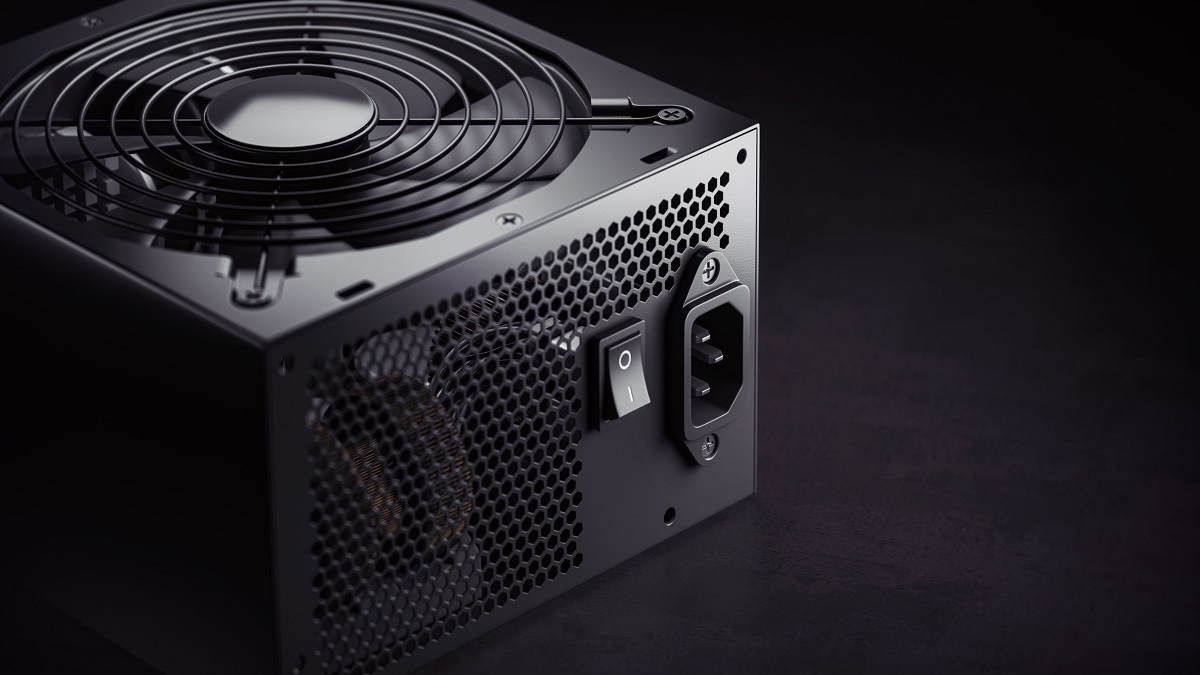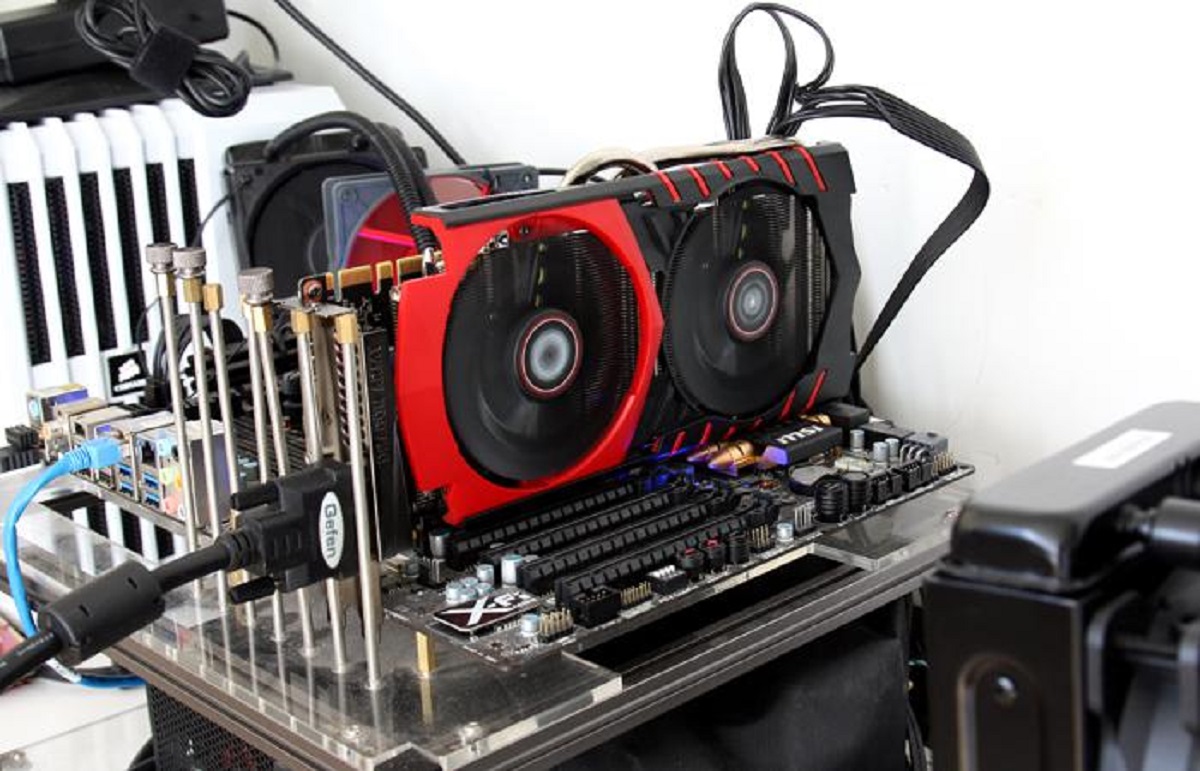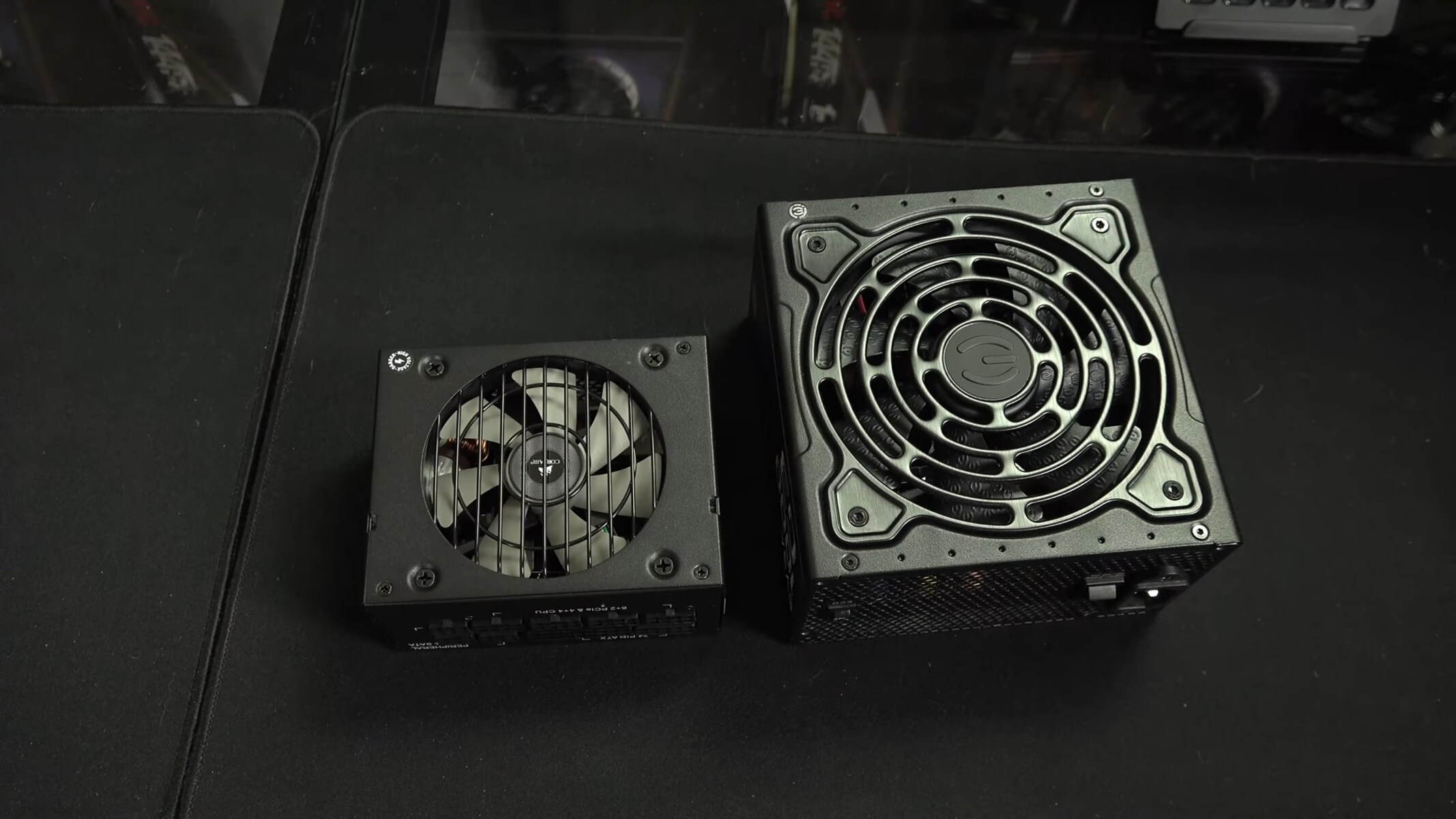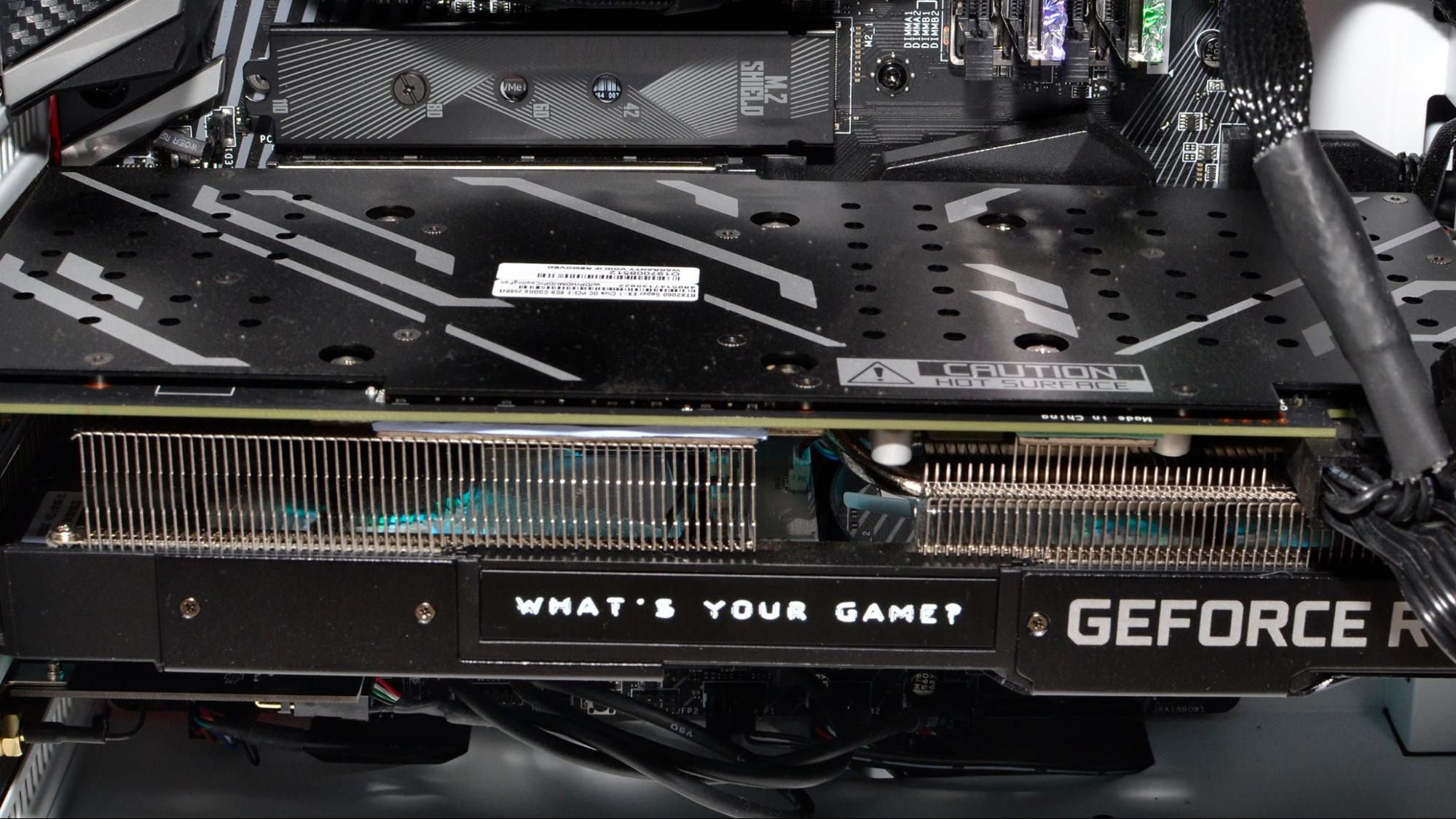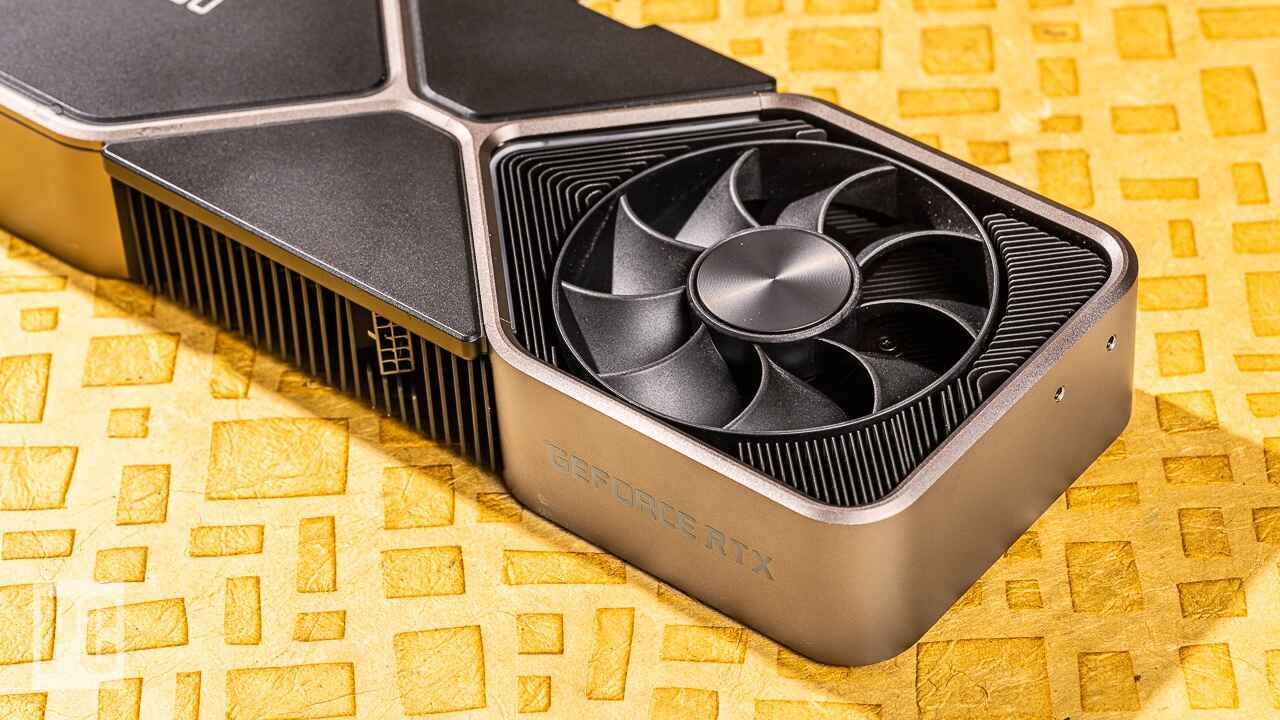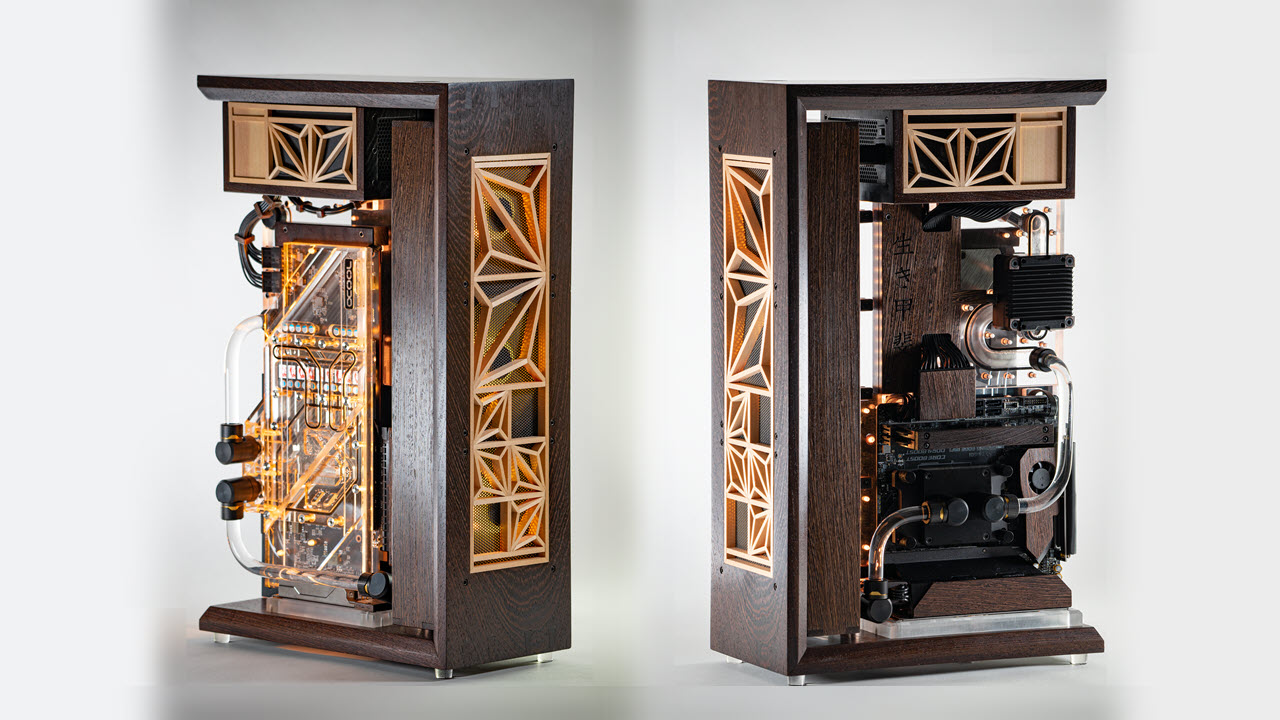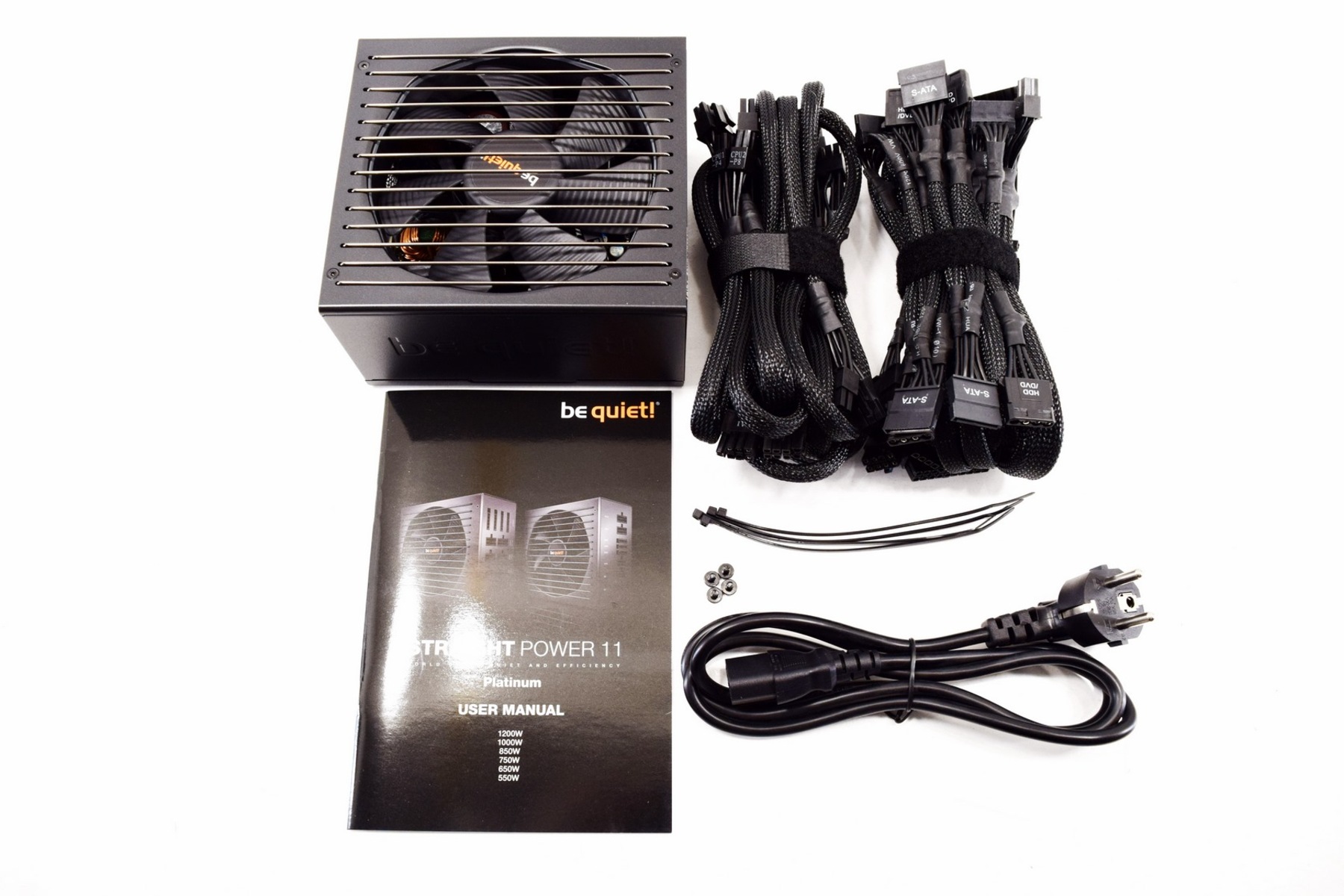Introduction
A power supply unit (PSU) is a critical component of a computer system that converts AC (alternating current) power from the electrical outlet into DC (direct current) power that is utilized by the computer’s components. It provides the necessary power to ensure the smooth and efficient operation of all the hardware components.
There are various types of power supply units available in the market, each designed to meet specific requirements and cater to different types of computer systems. Understanding the different kinds of power supply units can help you choose the right one for your needs, whether you’re building a gaming rig, a compact workstation, or a server.
In this article, we’ll explore the different kinds of power supply units and their unique features and applications. Whether you’re a novice computer builder or an experienced enthusiast, this guide aims to provide you with valuable insights into the world of power supply units.
It’s worth noting that the specifications and features mentioned in this article are subject to change as technology advances. It’s always a good idea to check the latest information and consult with experts before making a final decision.
ATX Power Supply
The ATX (Advanced Technology eXtended) power supply is one of the most common types of power supply units used in desktop computers. It follows the ATX form factor, which is a set of standards for the design and size of computer components.
ATX power supplies are known for their reliability, efficiency, and wide compatibility. They are suitable for a wide range of computer systems, including gaming PCs, workstations, and regular desktop computers.
One of the key features of an ATX power supply is its modular design. This means that the cables can be detached and connected as needed, allowing for better cable management and improved airflow inside the computer case. This modular design also makes it easier to upgrade or replace individual cables.
ATX power supplies typically include various connectors to power different components of the computer, such as the motherboard, graphics card, and storage devices. These connectors include the 24-pin power connector for the motherboard, 4+4 pin or 8-pin connector for the CPU, and multiple SATA power connectors for storage drives.
In terms of power rating, ATX power supplies are available in a wide range of wattages, from 300 watts to over 1000 watts. It’s crucial to choose a power supply that can provide enough power to meet the requirements of your computer components, ensuring stability and preventing system crashes.
Furthermore, ATX power supplies often come with features like over-voltage protection, under-voltage protection, and short-circuit protection. These safety features help safeguard your computer components from potential damage caused by power fluctuations or electrical faults.
Overall, the ATX power supply is a versatile and reliable choice for most desktop computer systems. Its modular design, wide compatibility, and ample power options make it a popular choice among computer enthusiasts and professionals alike.
SFX Power Supply
The SFX (Small Form Factor) power supply is specifically designed for compact computer systems that require a smaller footprint. These power supplies are ideal for mini-ITX cases, HTPCs (Home Theater PC), and other small form factor builds where space is limited.
The SFX power supply is smaller in size compared to the standard ATX power supply, making it a perfect fit for mini-ITX motherboards and cases. Despite its smaller size, it still delivers reliable power to the components of the computer system.
While the ATX power supply follows a standard form factor, the SFX power supply comes in two variations – SFX and SFX-L. The SFX-L variant is slightly longer and offers additional features such as increased power output and quieter operation due to the larger fan size.
Despite their compact size, SFX power supplies are designed to deliver sufficient power to meet the demands of various computer configurations. The power output can range from around 300 watts to over 750 watts, depending on the specific model and brand.
One of the key advantages of SFX power supplies is their improved airflow and cooling capabilities. Due to their smaller size, these power supplies often feature a single 80mm or 92mm fan that helps in efficient heat dissipation. Some models even come with semi-passive or fully passive cooling, where the fan only spins up under heavy loads or high temperatures.
SFX power supplies also offer modular or semi-modular cabling options, allowing for better cable management and maximizing space within the compact system. This feature helps improve airflow and reduces clutter, which is crucial for smaller builds.
It’s important to note that when considering an SFX power supply for your build, you need to ensure its compatibility with your mini-ITX case and other components. Not all mini-ITX cases are designed to accommodate SFX power supplies, so it’s essential to check the specifications of both the power supply and the case before making a purchase.
Overall, the SFX power supply is an excellent choice for compact computer systems that require a smaller footprint. Its size, efficient cooling, and modular cabling options make it the go-to option for mini-ITX builds and other small form factor computers.
TFX Power Supply
The TFX (Thin Form Factor) power supply is designed specifically for slim and compact computer cases, particularly those used in pre-built systems or low-profile desktop computers. These power supplies are commonly found in small form factor PCs that prioritize space-saving and energy efficiency.
TFX power supplies are smaller in size compared to both ATX and SFX power supplies. They are specifically designed to fit into slim cases with limited internal space while still providing adequate power to the system’s components.
These power supplies typically have a maximum power output ranging from around 200 watts to 350 watts, making them suitable for powering low-power systems such as office computers, media centers, or basic home PCs. However, it’s essential to ensure that the power supply’s wattage is capable of meeting the requirements of your system.
One key feature of TFX power supplies is their compact design. They follow a standard form factor with dimensions measuring approximately 85mm in width, 70mm in height, and 175mm in length. These compact dimensions make them ideal for systems with slim cases that have limited space for installing components.
TFX power supplies often come with a single 80mm or 92mm fan, which helps dissipate heat and maintain a suitable operating temperature. The fan’s size is optimized to provide efficient cooling while keeping noise levels to a minimum, making them ideal for quiet computing environments.
Similar to other power supply units, TFX power supplies also feature different connectors for powering various components. These include the 24-pin motherboard connector, 4 or 8-pin CPU connector, and connectors for peripherals such as hard drives and optical drives.
It’s important to note that due to their specialized slim form factor, TFX power supplies are not as readily available as ATX or SFX power supplies. However, they are widely sold by reputable manufacturers and can be purchased online or from specific computer hardware retailers.
Overall, TFX power supplies are specifically designed for slim and compact computer cases. With their compact dimensions, adequate power output, and efficient cooling capabilities, they are an excellent choice for low-power systems and small form factor desktop computers. When building or upgrading your system, consider the TFX power supply if you require a slim and space-saving solution while ensuring reliable power delivery.
Flex ATX Power Supply
The Flex ATX power supply, as the name suggests, is designed to provide power in compact and space-constrained computer systems. It is commonly used in compact desktop PCs, mini-ITX cases, and small form factor builds where size is a crucial factor.
Flex ATX power supplies are smaller in size compared to standard ATX power supplies but slightly larger than TFX power supplies. They are specifically designed to fit into cases that require a balance between power delivery and space-saving.
One of the distinctive features of the Flex ATX power supply is its flexible form factor, which allows for better compatibility with cases that have specific size and dimension requirements. These power supplies typically have a depth of around 150mm or less, making them suitable for cases with limited internal space.
Flex ATX power supplies usually have a lower power output, ranging from 200 watts to 400 watts, which is suitable for powering small form factor builds. These power supplies are commonly used in low-power systems that prioritize energy efficiency, such as media center PCs or office workstations.
Despite their smaller size and lower power output, Flex ATX power supplies still incorporate essential features found in larger power supplies. These include safety features like over-voltage protection, over-current protection, and short-circuit protection to safeguard the computer components from potential voltage spikes or electrical faults.
Similar to other power supplies, Flex ATX units come equipped with various connectors for powering different components. These connectors include the 24-pin motherboard connector, 4 or 8-pin CPU connector, and connectors for storage devices such as hard drives and solid-state drives.
It’s important to note that due to their specific form factor, Flex ATX power supplies may not be as readily available as standard ATX power supplies. However, they are widely stocked by reputable manufacturers and can be found through online retailers or specialized computer hardware stores.
Overall, the Flex ATX power supply is a compact and space-saving option for small form factor builds. Its flexible form factor, lower power output, and essential features make it suitable for systems that prioritize size, energy efficiency, and reliability. When building or upgrading a compact desktop PC or mini-ITX system, consider the Flex ATX power supply for a balance between power delivery and space optimization.
Mini ITX Power Supply
The Mini ITX power supply is specifically designed for Mini ITX form factor cases, which are compact and space-saving computer cases utilized in small form factor builds. These power supplies are optimized to provide efficient power delivery while maintaining a small footprint.
Mini ITX power supplies are even smaller in size compared to Flex ATX power supplies and are specifically tailored for the dimensions and requirements of Mini ITX cases. These cases typically have limited internal space, requiring a power supply that can fit snugly into the available area.
Due to their compact size, Mini ITX power supplies usually have a lower power output compared to standard ATX power supplies. The power output typically ranges from around 150 watts to 300 watts, which is suitable for low-power Mini ITX systems such as home theater PCs (HTPCs) or compact workstations.
One key feature of Mini ITX power supplies is their efficiency. They are designed to meet strict energy efficiency standards, ensuring that power is converted and delivered efficiently to the system’s components. This helps reduce energy consumption and heat generation, making it ideal for systems that prioritize power efficiency and quiet operation.
Mini ITX power supplies, like other power supplies, come equipped with various connectors to power the different components of the computer system. These connectors include the 24-pin motherboard connector, 4 or 8-pin CPU connector, and connectors for SATA drives and peripheral devices.
Despite their smaller size, Mini ITX power supplies often incorporate safety features such as over-voltage protection, over-current protection, and short-circuit protection. These features help protect the computer components from potential power-related issues and ensure the system’s longevity and stability.
When choosing a Mini ITX power supply, it’s crucial to consider the power requirements of your system’s components. Ensuring that the power supply can provide enough wattage to meet the demands of your CPU, graphics card, and other components is essential for stable and reliable operation.
Overall, the Mini ITX power supply is specifically designed for the unique requirements of Mini ITX form factor cases. Its compact size, energy efficiency, and essential features make it an excellent choice for small form factor builds where space optimization and power efficiency are paramount. When building a compact and efficient Mini ITX system, consider the Mini ITX power supply to ensure reliable power delivery in a small package.
Server Power Supply
A server power supply is a specialized type of power supply unit designed for use in server systems. Servers are high-performance computers that require a reliable and robust power supply to handle the demanding workloads and continuous operation they are subjected to.
Server power supplies are built to provide stable and efficient power delivery to multiple components simultaneously. They are typically designed for compatibility with rack-mounted server chassis and come in various form factors to fit different server configurations.
One of the key features of server power supplies is their high power output. Due to the intensive nature of server operations and the number of components they need to power, server power supplies often offer a significantly higher wattage compared to standard desktop power supplies. It is not uncommon to find server power supplies with power outputs ranging from 500 watts to over 2000 watts.
Server power supplies are also designed with redundancy in mind. Redundant power supplies are common in server systems, ensuring that the server remains operational even if one power supply fails. Redundancy is a critical feature in server environments where continuous uptime is essential for smooth business operations.
Efficiency is another crucial aspect of server power supplies. They are designed to meet specific energy efficiency standards, such as 80 PLUS certifications, to minimize energy loss and reduce operating costs. Higher efficiency levels result in less heat generation and lower power consumption, making them ideal for large-scale server deployments.
In addition to the standard connectors found in desktop power supplies, server power supplies usually provide special connectors to support multiple hard drives, RAID cards, and other server-specific components. This allows for effective cable management and power distribution within the server chassis.
Server power supplies often feature intelligent power management capabilities, such as power monitoring and control functions. These features enable administrators to monitor power usage, adjust power settings, and maximize efficiency in server environments.
When choosing a server power supply, it’s crucial to consider the specific requirements of your server system, such as the number of components, power redundancy needs, and power efficiency goals. It’s recommended to consult with server experts or refer to the server manufacturer’s guidelines to ensure compatibility and optimal performance.
Overall, server power supplies are purpose-built to meet the demanding power needs of server systems. With their high power output, redundancy, efficiency, and intelligent control features, server power supplies are crucial components for ensuring continuous and reliable operation in server environments.
Redundant Power Supply
A redundant power supply is a crucial component in server systems and mission-critical environments where continuous uptime is paramount. It provides backup power and ensures uninterrupted operation in the event of a power supply failure, significantly reducing the risk of system downtime and data loss.
Redundant power supplies are typically designed with two or more power supply units working in parallel. If one power supply unit fails or malfunctions, the other active power supply units seamlessly take over the power load, providing uninterrupted power to the server system.
This redundancy feature adds an extra layer of reliability, ensuring that the server can continue to operate without any interruption even if one power supply unit fails. This is of utmost importance in environments where system downtime can have severe consequences, such as data centers, network operation centers, or critical infrastructure systems.
Redundant power supplies are commonly implemented using a hot-swappable design, meaning the failed power supply unit can be removed and replaced while the server is still running. This further minimizes downtime, as there is no need to shut down the server or interrupt the operation when replacing the faulty unit.
The main advantage of redundant power supplies is that they provide a failsafe mechanism, maximizing the availability and reliability of the server system. Should one power supply unit fail, the backup unit(s) immediately provide the necessary power, eliminating the risk of system shutdown and the associated negative consequences.
When selecting a redundant power supply, it’s essential to consider the power requirements of the server system and ensure that the power supplies have adequate capacity to handle the load. It’s recommended to choose power supplies from reputable manufacturers that offer high-quality components and have a proven track record in delivering reliable products.
Redundant power supplies often come with additional features such as power monitoring and fault detection. These features enable administrators to monitor the power supply status, identify potential issues, and proactively address them before they cause any disruptions.
It’s important to note that implementing redundant power supplies requires proper configuration and setup. It is recommended to consult server experts or refer to the manufacturer’s guidelines to ensure proper installation and optimal performance of the redundant power supply system.
In summary, redundant power supplies are an integral part of server systems in critical environments. They provide a reliable backup power source, ensuring uninterrupted operation and minimizing the risk of downtime. By implementing redundant power supplies, organizations can maximize system availability and ensure the continuity of their operations.
Modular Power Supply
A modular power supply is a type of power supply unit that offers flexibility and convenience in cable management. Unlike traditional non-modular power supplies, modular power supplies allow users to connect only the necessary cables to their computer components, reducing clutter and improving airflow within the system.
One of the primary advantages of a modular power supply is the ability to customize the cable connections based on the specific components installed in the computer. It typically comes with detachable cables, enabling users to connect just the required cables and leave out the ones that are not needed.
This modular design eliminates the need to bundle and manage unnecessary cables inside the computer case. By reducing cable clutter, users can achieve a cleaner and more organized build, improving system aesthetics and airflow. It also simplifies future upgrades or modifications as new components can be easily accommodated without the need for extra cables.
Modular power supplies are available in various configurations, including fully-modular, semi-modular, and non-modular options. Fully-modular power supplies provide complete flexibility, allowing users to connect or disconnect any cable as required. In contrast, semi-modular power supplies have some fixed cables, typically for the motherboard and CPU, while offering modular connections for other components.
Non-modular power supplies, on the other hand, have a fixed set of cables that cannot be detached. While non-modular power supplies are more cost-effective, they can result in excess cables inside the case, potentially obstructing airflow and making cable management more challenging.
When selecting a modular power supply, it’s important to consider the power requirements of the system and choose a unit with an appropriate wattage. Like standard power supplies, modular power supplies come in various power ratings to accommodate different computer configurations.
It’s also worth noting that modular power supplies often incorporate safety features such as over-voltage protection, under-voltage protection, and short-circuit protection to ensure the safety of the system and its components.
Overall, a modular power supply provides users with the convenience of customizing cable connections to optimize cable management and airflow within their computer systems. Whether it’s a fully-modular or semi-modular design, a modular power supply offers flexibility and ease of installation, contributing to a cleaner and more efficient overall build.
Fully-Modular Power Supply
A fully-modular power supply is a type of power supply unit that offers the highest level of customization and flexibility in cable management. It is designed to provide users with complete control over cable connections, allowing them to connect only the necessary cables to their computer components.
Unlike non-modular or semi-modular power supplies, which have some fixed cables that cannot be detached, a fully-modular power supply features detachable cables for all connections. This means that users have the freedom to connect only the cables that are required based on their specific system configuration.
This modular design provides multiple advantages. Firstly, it significantly reduces cable clutter inside the computer case, improving airflow and optimizing thermal performance. With fewer cables obstructing the airflow, the system can operate at lower temperatures, which can lead to improved stability and longevity of the components.
Secondly, a fully-modular power supply allows for easier cable management. Users can select the appropriate length of cables for their specific build and install them precisely where they are needed without any unnecessary cable length or excess cables getting in the way. This results in a cleaner and more organized build, improving aesthetics and ease of future upgrades or modifications.
Additionally, a fully-modular power supply simplifies the process of installing or removing components. Since the cables can be easily disconnected and reconnected, users can make changes to their system without hassle or confusion, saving time and effort in cable management.
It’s important to note that fully-modular power supplies are available in various wattages to accommodate different power requirements. Users must choose a power supply unit with an appropriate wattage to ensure it can adequately power their system’s components.
Like other power supplies, fully-modular units incorporate essential safety features, such as over-voltage protection, under-voltage protection, and short-circuit protection, to ensure the protection of the system and its components against potential electrical hazards.
While fully-modular power supplies offer the highest level of customization and flexibility, it’s worth considering that they are typically more expensive than non-modular or semi-modular power supplies. However, the convenience and advantages they provide in terms of cable management and system optimization make them a popular choice among enthusiasts, gamers, and professionals.
In summary, a fully-modular power supply is designed to offer the ultimate level of customization and flexibility in cable management. By allowing users to connect only the necessary cables to their system components, it reduces cable clutter, improves airflow, and simplifies system maintenance and upgrades. If cable management and system optimization are priorities for your build, a fully-modular power supply is an excellent choice.
Semi-Modular Power Supply
A semi-modular power supply is a type of power supply unit that offers a balance between customization and ease of use in cable management. It combines the convenience of modular cables for specific components with some fixed cables for essential connections, typically for the motherboard and CPU.
Unlike fully-modular power supplies, which allow users to connect or disconnect all the cables as needed, semi-modular power supplies come with a few fixed cables that cannot be detached. These fixed cables usually include the 24-pin ATX motherboard connector and the 4 or 8-pin CPU power connector.
The key advantage of a semi-modular power supply is that it provides flexibility in cable management while ensuring the essential connections are always present. The fixed cables are typically the ones required by every system, so users don’t have to worry about having the necessary connectors available for the motherboard and CPU.
With the remaining cables being modular, users can easily connect the required cables for other components such as graphics cards, hard drives, and peripherals. This allows for a cleaner and more organized build by eliminating excess cables that would otherwise hinder airflow and add clutter to the system.
Semi-modular power supplies provide the benefits of modular cabling where it matters the most, simplifying cable management and allowing users to choose the appropriate cable lengths for their specific build. This not only improves the aesthetics of the system but also eases future upgrades or modifications.
The fixed cables in a semi-modular power supply are typically designed with optimal lengths for the intended application, reducing unnecessary cable clutter inside the case. This, in turn, enhances airflow and promotes efficient cooling of the system, contributing to overall system stability.
Like other power supplies, semi-modular units incorporate essential safety features such as over-voltage protection, under-voltage protection, and short-circuit protection to safeguard the system and its components from potential electrical issues.
It’s important to note that semi-modular power supplies are available in various wattages to accommodate different power requirements. Users must select a power supply unit that can provide sufficient power to meet the demands of their system’s components.
In summary, a semi-modular power supply offers a balance between customization and ease of use in cable management. By combining fixed cables for essential connections with modular cables for other components, it enables users to achieve a cleaner and more organized build while ensuring the necessary connections are always present. If you value flexibility in cable management without compromising essential connections, a semi-modular power supply is an excellent choice.
Non-Modular Power Supply
A non-modular power supply is a type of power supply unit that comes with a fixed set of cables that cannot be detached or replaced. Unlike modular or semi-modular power supplies, non-modular units have all the necessary cables permanently attached to the power supply, including those for the motherboard, CPU, and peripheral devices.
Non-modular power supplies are typically more affordable compared to modular or semi-modular options since they do not offer the same level of customization and cable management flexibility. However, they still provide reliable power delivery to computer components.
The main disadvantage of a non-modular power supply is the presence of excess cables that are not required by every system. These extra cables can contribute to cable clutter inside the computer case, potentially obstructing airflow and making cable management more challenging.
Despite the limitations in cable management, non-modular power supplies are favored for their simplicity and reliability. The fixed cables ensure that all the necessary connections are readily available for the motherboard, CPU, and peripherals without the need for additional cable connections.
Non-modular power supplies are designed with adequate cable lengths for standard computer configurations. However, this can result in excess cable length when used in small form factor cases or optimized cable management builds. It is important to properly manage and secure the excess cables to avoid obstructing airflow or creating potential hazards.
When installing or upgrading components in a system with a non-modular power supply, users need to plan and manage the cables carefully to ensure a clean and efficient build. Effective cable routing, using cable ties or management accessories, can help mitigate the issues caused by excess cables.
Non-modular power supplies still incorporate essential safety features such as over-voltage protection, under-voltage protection, and short-circuit protection to safeguard the system and its components from potential electrical issues.
In terms of power output, non-modular power supplies are available in various wattages to accommodate different system requirements. It is crucial to choose a power supply with adequate wattage to power the components effectively and maintain stability during operation.
In summary, a non-modular power supply provides a reliable and cost-effective option for powering computer systems. While it lacks the customization and cable management flexibility of modular or semi-modular power supplies, a non-modular unit still functions efficiently and incorporates important safety features. When cable management is not a top priority or budget constraints are a concern, a non-modular power supply is a suitable choice for ensuring reliable power delivery.
High-End Power Supply
A high-end power supply is an advanced and premium-grade power supply unit designed to meet the demanding requirements of high-performance computer systems and enthusiast builds. These power supplies offer superior performance, durability, and efficiency to ensure stable power delivery even under heavy loads.
High-end power supplies are engineered with top-quality components and advanced technologies to provide exceptional power efficiency and reliability. They often come with higher wattage ratings, ranging from 750 watts to 2000 watts or more, to accommodate power-hungry components like high-end processors, multiple graphics cards, and extensive storage arrays.
One of the hallmarks of a high-end power supply is its efficiency rating. These power supplies often adhere to stringent energy efficiency standards, such as 80 PLUS certifications. Higher efficiency means less power is lost as heat and reduced energy consumption, resulting in lower electricity costs and reduced heat output in the system.
In addition to high power output and efficiency, high-end power supplies are designed to handle demanding loads with stability and reliability. They feature enhanced voltage regulation, low ripple and noise levels, and high-quality capacitors to provide clean and consistent power to the sensitive components of the system.
High-end power supplies also incorporate advanced cooling systems, such as larger and more efficient fans, multiple heat sinks, and heat dissipation technologies. These features ensure that the power supply remains cool even during intense computing sessions, providing optimal performance and longevity.
Modular or fully-modular cable designs are also common in high-end power supplies, offering flexibility in cable management and reducing clutter inside the computer case. This not only enhances airflow but also improves the overall aesthetics of the build.
Furthermore, high-end power supplies often include additional features like customizable RGB lighting, digital monitoring and control, and enhanced protection mechanisms. These features allow users to monitor and adjust power-related aspects of their system, ensuring its stability and protection against electrical faults, over-voltage, and other potential issues.
However, it is worth noting that high-end power supplies typically come with a higher price tag compared to standard power supplies. The investment in a high-end power supply is justified for users who demand exceptional performance, reliability, and efficiency for their advanced and high-performance computer systems.
In summary, a high-end power supply offers top-tier performance, efficiency, and reliability for high-performance computer systems. With superior power output, advanced cooling mechanisms, modular cable designs, and additional features, these power supplies cater to the needs of enthusiasts and professionals seeking optimal power delivery for their demanding builds.
Low-End Power Supply
A low-end power supply is an entry-level power supply unit that caters to basic computing needs and affordable system builds. These power supplies provide the necessary power to run essential computer components without any extravagant features or high wattage ratings.
Low-end power supplies are designed to meet the basic power requirements of budget-friendly computer systems. They typically have power ratings ranging from 300 watts to 500 watts, which is sufficient for powering entry-level CPUs, integrated graphics, and a limited number of peripherals.
While low-end power supplies may not offer the same features and quality as their higher-end counterparts, they still provide reliable power delivery for less demanding computing tasks. As long as users choose a power supply with an appropriate wattage and from a reputable manufacturer, their system should operate without issues.
Low-end power supplies are often built with cost-efficiency in mind, which means they may not incorporate advanced technologies like high efficiency ratings or modular cable designs. However, they still include essential safety features such as over-voltage protection, under-voltage protection, and short-circuit protection to protect the system and its components from potential power-related issues.
These power supplies typically come with fixed cables that are permanently attached to the power supply unit. While this reduces flexibility in cable management, it simplifies installation and ensures that the necessary connectors are always available for the motherboard, CPU, and peripherals.
When considering a low-end power supply, it’s important to ensure that its wattage meets the power requirements of the system. Choosing a power supply with insufficient wattage can lead to stability issues and possible component damage.
While low-end power supplies may not have the same level of efficiency or advanced features as higher-end models, they still serve as reliable options for basic computing needs. They are suitable for entry-level systems, office workstations, and casual use where lower power demands and cost-effectiveness are prioritized.
It’s also worth noting that low-end power supplies are commonly bundled with pre-built computer systems or sold as standalone units at affordable prices. This makes them accessible to users on a tight budget who are looking for a simple and reliable power supply solution.
In summary, a low-end power supply provides basic power delivery for entry-level computer systems and budget-friendly builds. While they may lack advanced features and high wattage ratings, these power supplies are reliable options for users with modest power demands and cost constraints. When choosing a low-end power supply, it is crucial to consider the system’s power requirements and opt for a reputable brand to ensure reliability and safety.
Conclusion
Choosing the right power supply unit is essential for the smooth and efficient operation of your computer system. Understanding the different kinds of power supply units available in the market allows you to make an informed decision based on your specific requirements and build goals.
ATX power supplies are versatile and widely compatible, making them suitable for a wide range of desktop computer systems. Their modular design provides flexibility in cable management, allowing for better airflow and customization.
For compact builds and small form factor systems, SFX power supplies offer a slim and space-saving solution. Their smaller size and efficient cooling capabilities make them ideal for HTPCs and mini-ITX cases.
TFX power supplies provide power in slim cases that require low-profile components. While they have a smaller power output, these power supplies are efficient and work well in low-power systems.
Flex ATX power supplies strike a balance between size and flexibility. They offer customization in cable management while fitting into cases with limited internal space.
Mini ITX power supplies are specifically designed for Mini ITX form factor cases. Their compact size and efficiency make them a suitable choice for small form factor builds.
Server power supplies are designed to handle the demanding workloads and continuous operation of server systems. They often feature redundant designs and advanced monitoring and control capabilities.
Modular power supplies, both fully-modular and semi-modular, provide flexibility in cable management and airflow optimization. Fully-modular power supplies offer complete customization, while semi-modular power supplies balance essential fixed cables with modular connections.
High-end power supplies cater to the needs of high-performance computer systems, offering superior power delivery, efficiency, and robust cooling. These power supplies incorporate advanced features and are designed for enthusiasts and professionals seeking optimal performance.
On the other hand, low-end power supplies provide a more budget-friendly option for basic computing needs. While they may lack advanced features, low-end power supplies offer reliable power delivery for entry-level systems.
Ultimately, selecting the right power supply unit depends on your specific system requirements, budget, and preferences. Consider factors like power output, efficiency, cable management, and safety features to ensure a compatible and reliable power supply that can meet the demands of your computer system.
Investing in a high-quality power supply unit ensures the stability, longevity, and efficiency of your computer system, providing you with a seamless computing experience.







